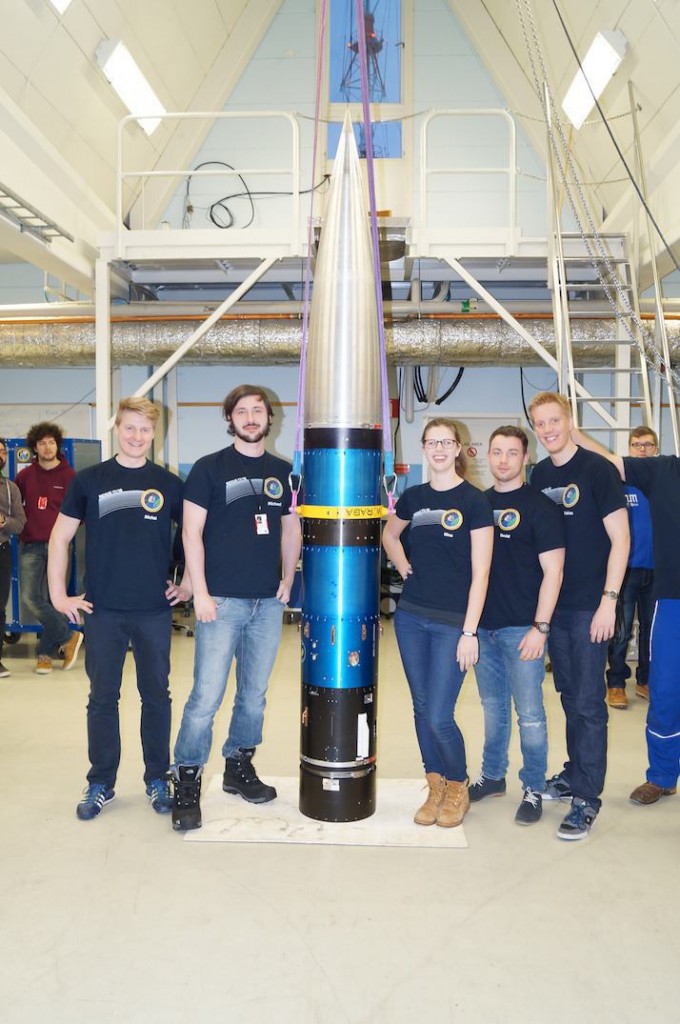Many people dream about sending a rocket into space. Together with the German Aerospace Center or DLR, and the RWTH Aachen Institute of Textile Engineering, ITA for short, five RWTH students were

able to fulfill this dream this year as part of the REXUS program.
In the REXUS program student teams from across Europe can conduct experiments on a rocket in space. The team with David Bierbüsse, Michel Busen, Nina Körtzinger, Tobias Meinert, and Michael Stankowski tested cellulose aerogel fibers for their ability to insulate under the conditions of a rocket flight. Textiles made of cellulose-aerogel fibers are modern materials, which will be used as insulation during space flights in the future. Aerogels are distinguished by their low ability to conduct heat and their low density. In contrast, cellulose possesses many advantages over aerogels. Cellulose is available in large amounts and not harmful to humans or the environment. For this reason, it is also economically interesting with regards to sustainability.
A process for manufacturing and for the textile development of cellulose-aerogel fibers is currently being developed at ITA. New properties are resulting, and pure aerogels cannot offer this form. Through its flexbility, it can be implemented everywhere, where bendable material is needed and conventional insulation isn’t an appropriate solution.
As space flight conditions cannot be replicated in the lab, the materials developed at ITA must be tested in space. Only in space do conditions exist similar to the actual application, which make it possible to gather realistic evaluations of the functionality. Samples of the cellulose-aerogel textile were used in a module of the rocket. During the flight the temperature of the innovative and conventional insulation materials were measured. Once the measurements were compared, such promising results were found about the functionality of cellulose-aerogel fibers in space that research at ITA will be expanded in the future.

